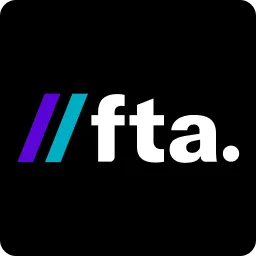Why Small Tasks Are the Next Big Revolution in Business Efficiency?
Big strategic projects get all the visibility. However, what quietly slows teams down are the small, everyday tasks that pile up across departments. From posting on social media to updating a CRM entry, these small actions chip away at productive hours.
What if small tasks were treated as a strategic asset instead of background noise?
The next big leap in business efficiency isn’t coming from another major initiative or transformation plan. It’s coming from mastering the micro, the rise of small-task efficiency.
This shift is redefining how companies allocate time, structure teams, and measure productivity.
What Are ‘Small Tasks’?
Small tasks are repetitive, routine, but essential to keeping business functions running smoothly. They may not make headlines, but they are the hidden gears of every operation.
Examples of small tasks:
- Data entry or database cleanup
- Social media scheduling and captioning
- Writing short product copy or headlines
- Tagging images, short clips, or content assets
- Generating ad variations or festival creatives
- Updating CRM notes or campaign trackers
These are low-decision, high-frequency activities. They may take just a few minutes each, but multiplied across days and departments, they dominate a workday.
Why They Matter More Than You Think
Small tasks often escape leadership attention, but they silently dictate how much real work gets done.
They multiply:
- One marketing executive handles 20 “small” updates a day.
- That’s 100 a week and 400 a month.
- Multiply that across a 10-member team, and it becomes 4,000 micro-actions monthly.
They block major work:
When teams spend hours on recurring admin or operational work, strategic output suffers.
- A creative director becomes a campaign coordinator.
- A growth manager turns into a data-entry specialist.
They drain focus:
Constant task-switching erodes deep work time. The brain reboots focus each time you jump from a strategy deck to a spreadsheet.
They can be optimised:
Automating or outsourcing them frees bandwidth for high-impact work.
- Faster completion
- Reduced cognitive load
- Better morale and team satisfaction
How Outsourcing Small Tasks Drives Efficiency
Outsourcing small tasks isn’t about cost-cutting; it’s about reallocation of energy. The goal is to keep internal teams focused on strategic outcomes while offloading the recurring actions to specialised partners.
Key advantages:
- Specialised expertise: Freelancers or micro-task teams execute repetitive jobs faster and more accurately.
- Scalable model: Convert fixed costs (hiring, overhead) into variable ones. Scale up or down as campaigns demand.
- Speed and turnaround: Small tasks can be executed overnight or in parallel, cutting project backlogs.
- Morale boost: Teams feel more productive when their day is filled with creative or strategic problem-solving rather than repetitive chores.
Example for workflow improvement:
The impact compounds less friction, more throughput, and sharper focus across the org.
Small Tasks in the Indian Business Context
India is uniquely positioned to lead this small-task revolution.
Why:
- A vast pool of skilled digital talent is available remotely.
- Competitive costs make micro-task outsourcing economically viable.
- Multilingual content needs create recurring micro-work opportunities.
Common examples of small tasks in Indian businesses:
- Creating regional language ad variations for festivals.
- Designing quick-turnaround social posts for brand days.
- Tagging and uploading content across marketplaces.
- Localising short videos for different audience clusters.
This is where our platforms like FTA Gigs come in, curating verified micro-task professionals who understand local markets and brand nuances.
India’s mix of affordability, cultural diversity, and digital readiness makes it the ideal testing ground for global small-task ecosystems.
How to Pick Which Small Tasks to Outsource (or Offload)
Not every small task needs to be outsourced. The key is identifying the ones that:
- Are repetitive or rule-based?
- Take time, but don’t demand core strategic thinking.
- Have skills easily available externally.
- Don’t impact brand voice or customer trust directly.
Quick audit checklist:
Ask your team:
- Which tasks consumed over 10% of your time last week?
- Did they directly contribute to revenue or growth?
- Could someone external complete them with clear instructions?
If yes, those tasks are prime candidates for outsourcing.
Common categories for outsourcing:
- Data entry and cleaning
- Graphic resizing and edits
- Social media scheduling
- CRM or lead tracking updates
- Short video clipping and captioning
Outsourcing 20% of such recurring work can free up as much as 40% of a team’s weekly productive hours.
Implementing - Process, Quality & Integration
To make outsourcing small tasks work at scale, structure and clarity are non-negotiable.
Best practices:
- Create clear briefs: Document every recurring task in a step-by-step format.
- Define SLAs: Set expectations for turnaround time, quality, and communication.
- Establish feedback loops: Start small, review output, and refine briefs.
- Integrate with your workflow tools: Use Trello, Notion, or Slack for seamless task tracking.
Platforms like FTA Gigs simplify this by connecting you with pre-vetted micro-task professionals who plug directly into your existing workflow.
Some of the common pitfalls to avoid -
- Poor briefing: Leads to errors and rework.
- No central ownership: Causes task duplication.
- Ignoring quality control: Results in inconsistency across assets.
- Over-communication: Micromanagement defeats the purpose of saving time.
The goal is to create a repeatable system, not a one-time project.
Future: The Gig-Micro Economy and Internal Models
The small-task revolution is part of a larger structural shift in how companies operate.
Emerging trends:
- Internal micro-task units: Businesses are creating small, cross-functional cells to handle recurring operational work efficiently.
- External gig pools: Remote micro-task talent available on demand, accessible through curated networks like FTA Gigs.
- Blended models: Combining automation tools with human micro-task talent for hybrid efficiency.
Cultural transformation:
- Viewing small tasks as strategic service lines, not “chores.”
- Empowering teams to design systems that automatically offload repetitive work.
- Measuring productivity by time saved, not just outputs created.
The future organisation will function like a dynamic ecosystem, core teams for strategy and creativity, surrounded by flexible micro-task layers that handle execution at scale.
Conclusion
Efficiency no longer depends only on grand plans or big restructures. It thrives in the discipline of handling the smallest moving parts efficiently.
Reframe how you see small tasks. They aren’t distractions; they’re your fastest path to reclaiming time, focus, and momentum.
Start simple.
Assign three micro-tasks this week via FTA Gigs and track how much productive time you regain.
That’s how the small-task revolution begins - one clear, efficient action at a time.
Do you want more traffic?

How to Scale Personalisation in ABM Without Losing Focus?
.jpeg)
How Creative Optimization Drives 40% More ROI in Performance Campaigns











